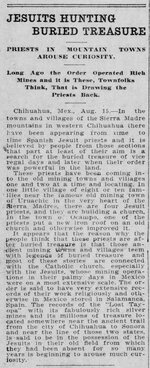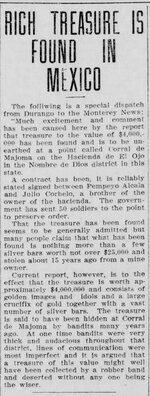deducer
Bronze Member
- Jan 7, 2014
- 2,280
- 4,355
- Primary Interest:
- Other
Okay kiddies,
For thee of little faith, I have decided to share some more knowledge. There are some that discount the finding of the Jesuit Cache in Rio de Janeiro because of one of the sources of the story "The Bay of Plenty Times" in Australia. Even though the other reference is from the Canada Law Journal, you seem to discount that as well. In reality, this story was very big news in July of 1891. There were retellings of the story during that month and the month of August (of the same year) in papers in every major city in the United States. Here are a few examples:
Enjoy - Mike
Of immense interest to me is not quite the caches themselves as much as the intricate nature of their storage, the elaborate and immense effort expended towards their concealment as this very particular thing is what I feel separates the Jesuits from the Spanish, for example. We see similar efforts being undertaken at places such as Sacambaya (and others), where expedition after expedition failed, not for lack of direction but for the immense labor involved. Similarly, I recall reading of an Emerald (?) mine in Brazil being sealed by a gigantic slab of stone placed atop, by scores of Indians under the directions of the padres. This makes one think that the same degree of intensity and cunning undertaken, must necessarily then be that which "Peligroza" refers to. Not that which is above, but remains tenaciously below.
Of particular interest, also, is the document from the Museum of Lisbon of RG Fr. Goncalves describing concealed property, whereof a copy of this document also resides (or resided) with the Reverend General of Rome (the Curia?). This would indicate that Rome also knew and was complicit.











 I'm not here to judge anyone - past or present. However, I think in terms of the Origin story of the America's there should be some acknowledgement. But maybe that is what treasure hunters are for! Look at what Mel Fisher has accomplished over the years, in moving the 'Atocha' from modern myth to reality.
I'm not here to judge anyone - past or present. However, I think in terms of the Origin story of the America's there should be some acknowledgement. But maybe that is what treasure hunters are for! Look at what Mel Fisher has accomplished over the years, in moving the 'Atocha' from modern myth to reality. 
 >
>